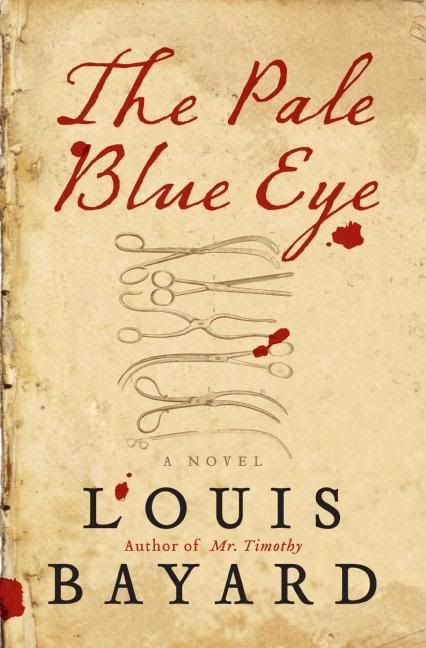 David Lynch’s Inland Empire is, to be utterly unoriginal about it, an enigma. I’ve enjoyed his films in the past, most notably Eraserhead, Elephant Man, and The Straight Story. Blue Velvet had it moments as did Mulholland Drive. Of his past films (that I have viewed)Inland Empire shares the most similarities with Mulholland Drive. The aspects of Mulholland Drive that lost my interest are the same elements that take up almost 2 hours of Inland Empire’s almost 3 hour length. Sure, Inland Empire is an enigma, but it’s a candy store Chinese puzzle type of enigma: you can’t work it out and you don’t know why you bothered in the first place.
David Lynch’s Inland Empire is, to be utterly unoriginal about it, an enigma. I’ve enjoyed his films in the past, most notably Eraserhead, Elephant Man, and The Straight Story. Blue Velvet had it moments as did Mulholland Drive. Of his past films (that I have viewed)Inland Empire shares the most similarities with Mulholland Drive. The aspects of Mulholland Drive that lost my interest are the same elements that take up almost 2 hours of Inland Empire’s almost 3 hour length. Sure, Inland Empire is an enigma, but it’s a candy store Chinese puzzle type of enigma: you can’t work it out and you don’t know why you bothered in the first place.OK, perhaps not as superficial as the above example. It’s dazzling at times and the cat and mouse with the audience about what is real; what is part of the movie being made within the movie; what is a dream; has this character assumed the identity of that character is fascinating. At first. But on and on it goes with more possible dreamscapes and switched identities and movies within a movie and possibly dreams within dreams. I lustily stayed with all these gear changes waiting for a great sorting out, but as it reached its end, I knew that no narrative conclusion would be found. On and on it went. Even into the credits, where a dance number took place among the characters of the movie. That was actually fun and zany – in a regular zany way, not in the David Lynch zany way.
The story, as it where, is about Nikki Grace, an actress, (Laura Dern) getting a plum part in what could be a comeback role. Cast opposite her in the movie is a womanizing young actor named Devon Burk (Justin Theroux). Nikki also has a jealous husband. And on the first day of the shoot, they all discover that the movie was made once before with terrible ends for the actors involved (due to a gypsy curse). Also, Nikki, before getting the part, meets a new neighbor who tells her about a boy who brings evil into the world and a girl who gets lost at the market. So far, so good. The movie establishes this story thread tightly with limited interruption from the various dreams, motley characters, and settings that will soon intrude.
Then there’s a weeping woman watching a TV and three anthromorphized rabbits on a sitcom set - laugh track and all. Later there’s a bunch of Hollywood Boulevard prostitutes with hearts of gold or sad empty eyes, depending on the scene. Oh, I almost forgot about the Eastern European circus workers who show up at a suburban barbeque. And the odd office of a rumpled man atop a strip club. Somehow the movie moves along undistracted by all these seemingly incongruous elements. It’s actually sort of ingenious how it does move along: Nikki goes through a door and her reality changes. It sublimely done and I’m sure Lynch fans will pay close attention to all the doorways in future viewings and track the various levels of the story that way.
I will say this for David Lynch: he can create a sense of foreboding from familiar situations like no one else. Blue Velvet’s tension between the placid life of suburban America contrasted with it’s seedy underbelly established this foreboding in a way that was miles ahead of its time. While mimicked countless times since, other filmmakers just don’t have the surreal approach of Lynch to pull it off. This same uncomfortableness is on display in Inland Empire. Drapes are blood red, lamps buzz as if they were hives of angry hornets, and living room conversations over tea take on a sense of danger. Lynch cues this with close-ups of reaction shots and quick cuts between the conversation. Much of this is counterbalanced by other scenes that are brightly shot and are sweet or funny or absurd (like the prostitutes breaking into “Locomotion.”) These patented Lynch touches prevent the wheels from falling off. In fact, in some ways, these scenes are the glue between the dreams, the alternate realities, and the downward spiral of Nikki Grace and/or her character in the movie within the movie.
Some of Inland Empire works: what works does so as individual scenes, as wonderful examples of the medium of filmmaking. Much of it doesn’t work. Ultimately, I was nonplussed by it all. It was an interesting ride that kept my attention but I left shrugging my shoulders when it was all over. Too many doors never closed. Too many windows into David Lynch’s mind that remain wide open.


